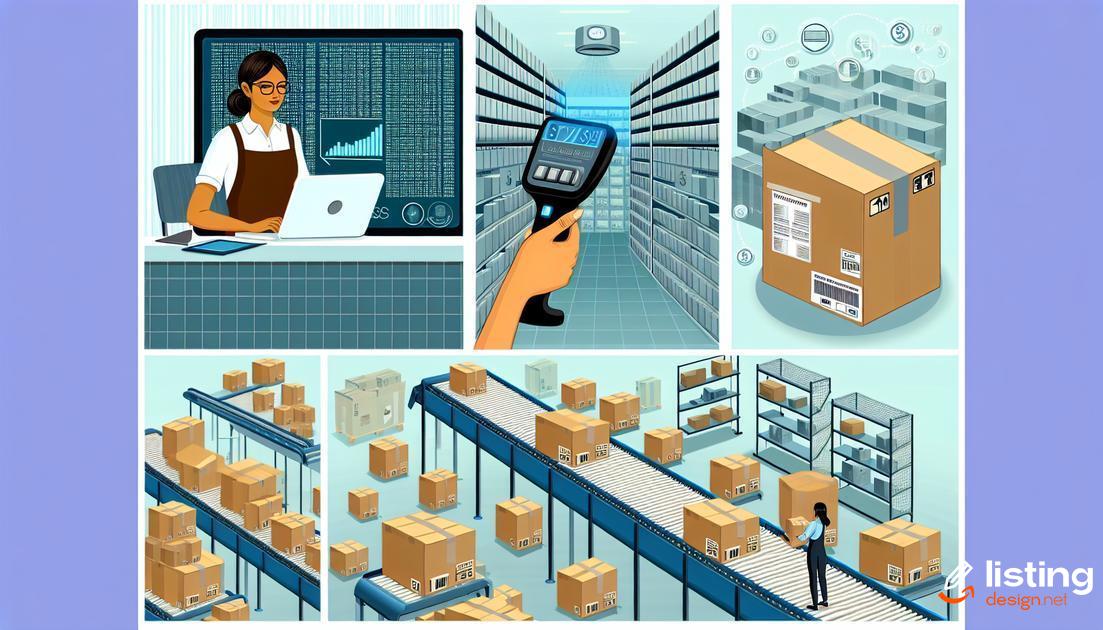Navigating the numerous costs associated with selling on Amazon can be daunting, but with our Comprehensive Amazon Cost Guide, you’ll uncover all the hidden fees and potential savings. Understanding each cost component from fulfillment fees to storage and advertising expenses is crucial for maximizing your profit margins. Read on as we break down every cost detail, starting with Amazon’s selling fees and moving on to tips for minimizing your overall expenditure.
Table of Contents
Understanding Amazon’s Selling Fees
Amazon’s selling fees can significantly impact your overall profitability. It’s essential to understand these fees to manage your costs effectively. Below, we delve into the various types of fees sellers encounter on Amazon.
First, there are referral fees. Amazon charges a percentage of the total selling price, which varies depending on the product category. This fee typically ranges from 6% to 45%, with most categories around 15%.
Next, consider closing fees. These are fixed charges applied to media items like books, music, videos, and DVDs, generally around $1.80 per item.
Amazon Individual vs. Professional Selling Plans
The Individual plan charges $0.99 per item sold, making it suitable for those selling fewer than 40 items a month. The Professional plan costs $39.99 per month, providing additional tools and no per-item fee, ideal for high-volume sellers.
To gain a competitive edge, understanding Amazon’s selling fees is crucial. Proper knowledge can help you price your products effectively and maintain profitability.
The Cost of Fulfillment by Amazon (FBA)

Basic FBA Fees
When you use Amazon’s Fulfillment by Amazon (FBA), there are a range of costs you need to be aware of. The most common fees are fulfillment fees, which are charged per unit based on the item’s weight and dimensions. These fees include picking and packing your orders, shipping them to customers, and handling returns.
Storage Costs
Amazon offers two types of storage fees: monthly inventory storage fees and long-term storage fees. The monthly fee is calculated according to the volume (measured in cubic feet) occupied by your inventory in Amazon’s fulfillment centers. Long-term storage fees are incurred for items that have been in a fulfillment center for more than 365 days.
Labeling and Preparation Fees
There are additional costs if you do not prep, label, or fulfill the packaging requirements on your own. Amazon can handle these services for you, but it will come at an extra charge. These fees ensure your items are ready for safe and secure shipping to the customers.
Removal and Disposal Fees
If you choose to remove inventory from Amazon warehouses, you will face removal fees. Additionally, if your inventory is not selling and you choose to dispose of it, disposal fees will apply.
Shipping Costs on Amazon
Shipping costs on Amazon can vary widely depending on several factors. Whether you’re selling products via Fulfilling by Amazon (FBA) or shipping items yourself, understanding the cost implications is crucial.
FBA Shipping Costs: When using FBA, Amazon handles storage, packaging, and shipping. While this can save time and effort, it does come at a cost. Amazon charges fees based on the size and weight of the item. For instance, the standard-sized items have a different fee structure compared to oversized products.
Self-Fulfillment Shipping Costs: If you choose to ship items yourself, you’ll need to account for the costs of packaging materials and shipping carriers. Many sellers use services like USPS, UPS, or FedEx and should factor in these shipping rates. Using tools to compare shipping rates can help you find the most cost-effective option.
Amazon also offers shipping discounts to sellers who use their partnered carriers. These discounts can significantly reduce shipping costs. To leverage these discounts, make sure to check the Amazon Partnered Carrier Program in Seller Central.
Lastly, keep in mind that fast shipping options like Amazon Prime may have different cost structures. Balancing speed and cost is essential to maintain profitability.
Subscription Fees: Individual vs. Professional

When selling on Amazon, it’s essential to choose the right subscription plan that suits your business needs and scales effectively. The Individual Plan is ideal for casual sellers or those just starting, as it charges $0.99 per item sold rather than a monthly fee. This plan is especially beneficial if you expect to sell fewer than 40 items per month, keeping your overall costs lower.
On the other hand, the Professional Plan requires a monthly subscription fee of $39.99 but comes with significant advantages for more serious sellers. This plan doesn’t charge the $0.99 per item fee, which becomes cost-effective if you’re selling more than 40 items monthly. Additionally, it offers more control over inventory and order management, access to advanced selling tools, bulk listing and reporting features, and eligibility for top placement on product detail pages.
Both plans include various selling fees that sellers must be aware of, including referral fees, variable closing fees, and shipping costs. Carefully analyze your anticipated sales volume and the benefits each plan offers to determine which subscription best fits your business model. The right choice can lead to significant cost savings and streamline your Amazon selling experience.
Storage Fees for Your Amazon Inventory
Amazon charges two main types of storage fees: monthly storage fees and long-term storage fees. Monthly storage fees are calculated based on the daily average volume (measured in cubic feet) occupied by your inventory in Amazon’s fulfillment centers. These fees vary by the time of year, with higher rates during October to December due to increased holiday storage demand.
For long-term storage, Amazon imposes additional charges on items stored for more than 365 days. These fees are also assessed based on volume or unit count, whichever is greater. It’s crucial for sellers to monitor their inventory age to avoid unexpected costs.
To mitigate storage fees, regularly reviewing inventory performance and removing slow-moving items can be beneficial. Utilizing the Amazon Removal Program helps dispose of or return unsold inventory to you, often at lower costs compared to long-term storage fees.
Understanding these storage costs and planning accordingly can help in managing your overall expenses when selling on Amazon.
Amazon Advertising Costs

Amazon Advertising Costs can vary significantly based on numerous factors. The primary tool for advertising on Amazon is Amazon Sponsored Products, which allows you to bid on keywords to display your products in Amazon search results. The cost for this service is typically measured as Cost Per Click (CPC), meaning you pay only when someone clicks your ad.
Another essential aspect to consider is the Advertising Cost of Sales (ACoS), which represents the ratio of ad spend to sales revenue generated from the ad. Lowering your ACoS can make your advertising efforts more efficient.
Additionally, Amazon offers Sponsored Brands (formerly known as Headline Search Ads), which are cost-per-click ads that promote your brand and product portfolio. These ads usually appear at the top of Amazon’s search results and can be a bit more expensive but offer higher visibility.
Amazon also provides Sponsored Display Ads, which are targeted to shoppers based on their interests and shopping behaviors. This type of ad offers a unique way to reach potential customers both on and off Amazon.
Considering all these elements is vital for effective budgeting and maximizing your return on investment (ROI). Regularly reviewing and optimizing your ad campaigns based on performance metrics is crucial for managing advertising expenses.
Hidden Fees: What to Watch Out For
Hidden Fees
Navigating through Amazon’s marketplace can be overwhelming, especially when it comes to hidden fees. Sellers often encounter unexpected charges that can significantly impact their profits. Referral Fees are one of the most common hidden costs. These fees are a percentage of the item’s sale price and vary depending on the product category. Make sure to familiarize yourself with these rates.
Another critical hidden fee is the Closing Fee for media products like books and DVDs. This fee is charged per item sold and can add up quickly. High-Volume Listing Fees might be applicable if you have a large catalog of products listed. These fees are charged monthly for sellers with more than a certain number of active listings.
Sellers using Fulfillment by Amazon (FBA) should also be aware of Long-Term Storage Fees. These fees are applied to inventory stored in Amazon’s fulfillment centers for extended periods. Regularly check your inventory levels and consider removing slow-moving items to avoid these charges.
Returns Processing Fees can also catch sellers by surprise. When a product is returned, Amazon may charge a fee for handling the return process. Understanding these potential costs will help you price your products more effectively and maintain your profit margins.
Tips to Minimize Your Amazon Costs

Review your product listings to ensure they are optimized. Use high-ranking keywords in your titles and descriptions to improve search visibility. Lower your FBA fees by ensuring your products are properly sized and weighed to avoid dimensional weight fees. Conduct regular audits of your inventory to avoid long-term storage fees. Use Amazon’s restock recommendations to maintain the right inventory levels and avoid overstocking costs. Choose the correct shipping method to balance speed and cost. Consider utilizing Amazon’s Seller Fulfilled Prime to retain Prime eligibility without FBA fees. Keep a close eye on your return rates and implement strategies to reduce them, thus minimizing associated costs. Lastly, monitor and adjust your advertising spend to ensure you’re getting the best ROI, and take advantage of any available promotions or discounts on Amazon’s advertising services.


